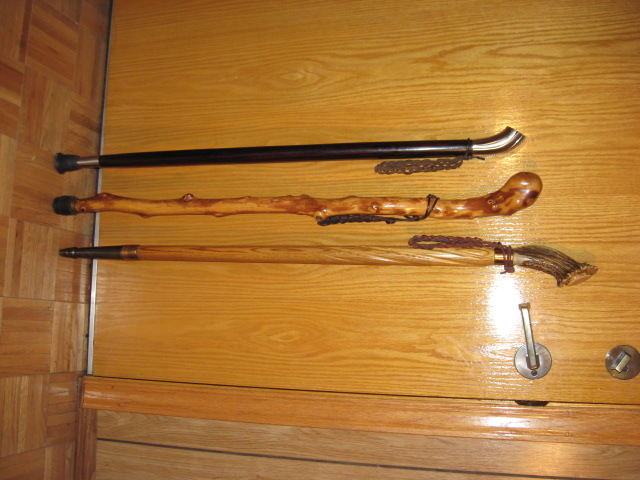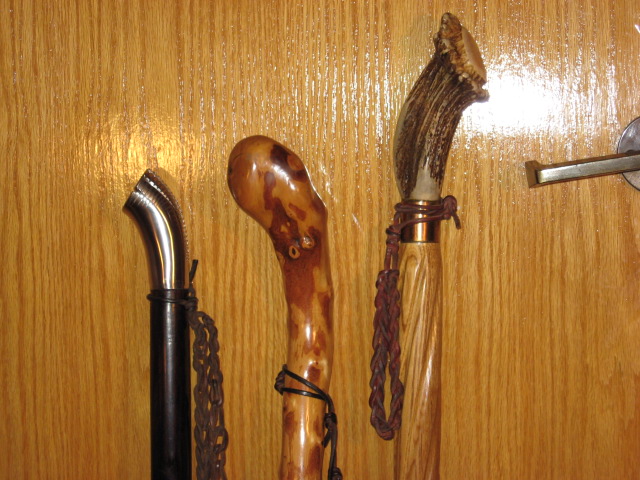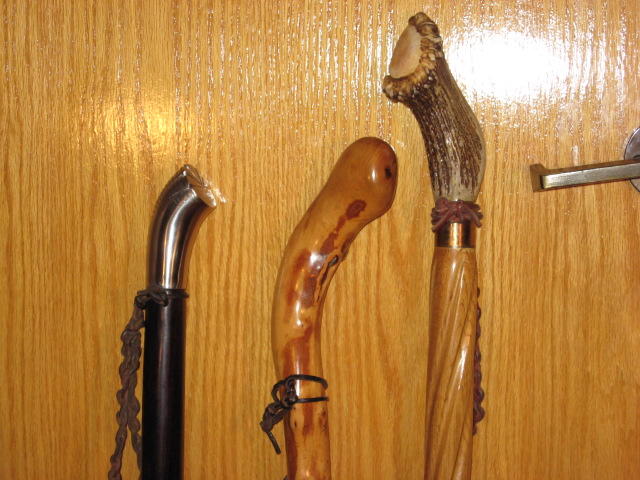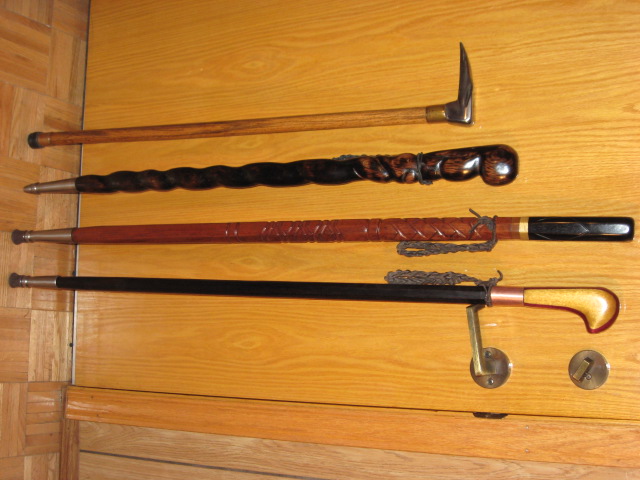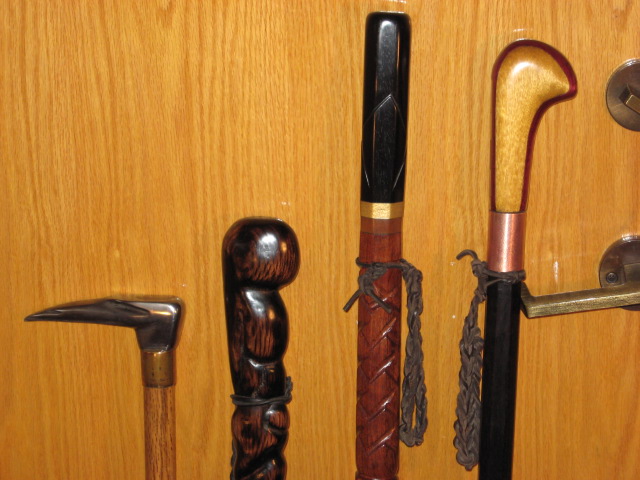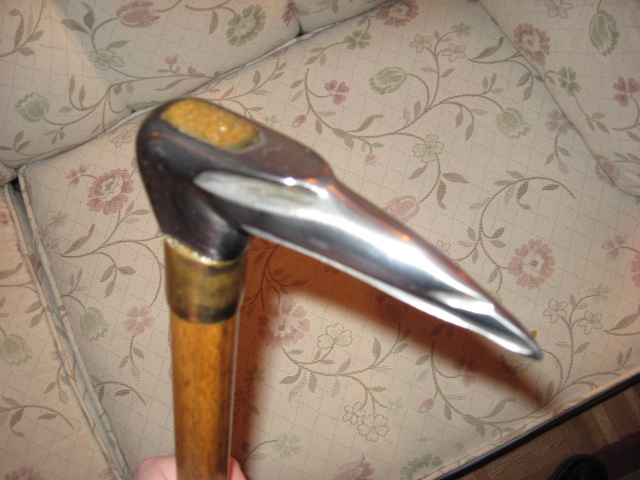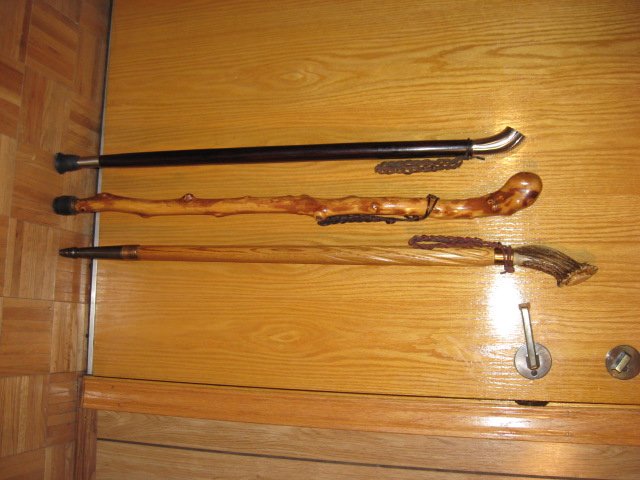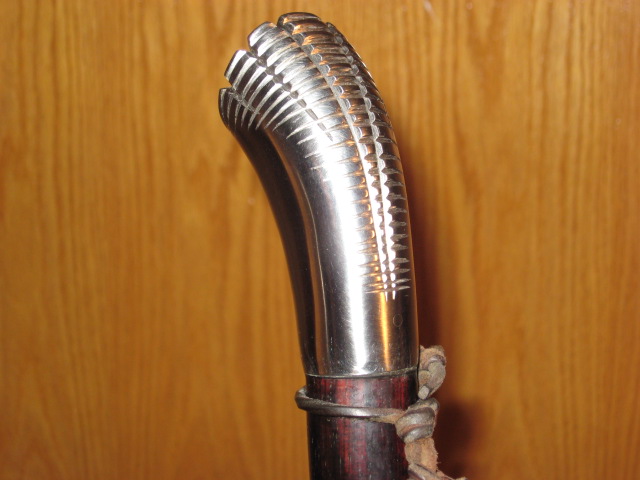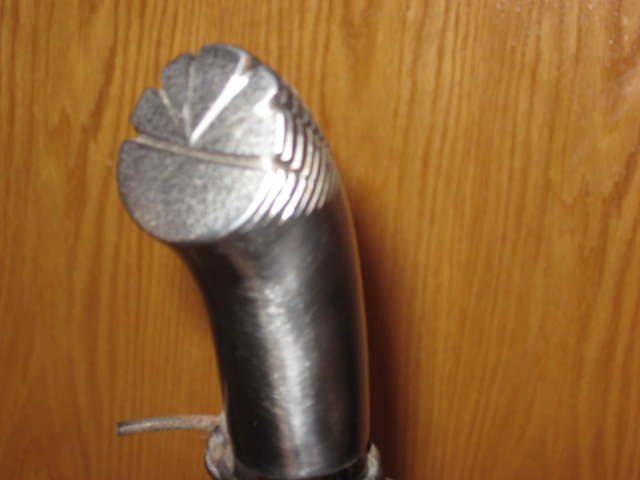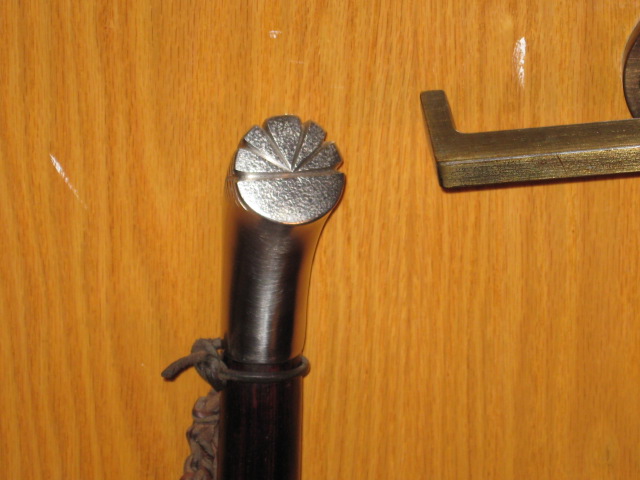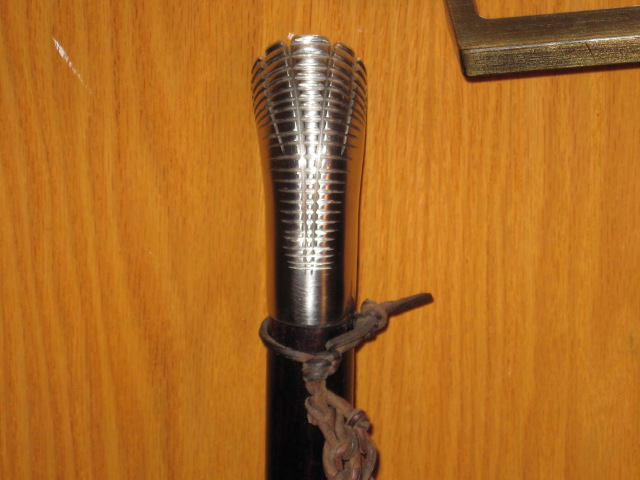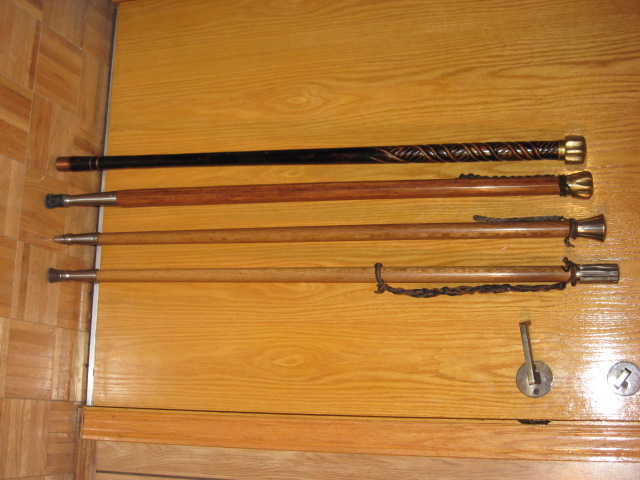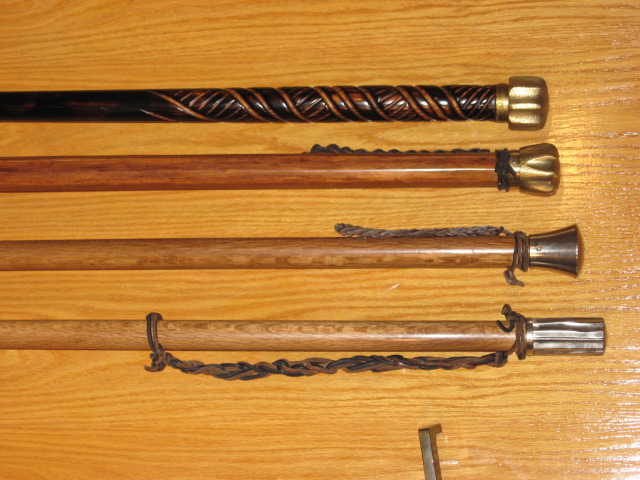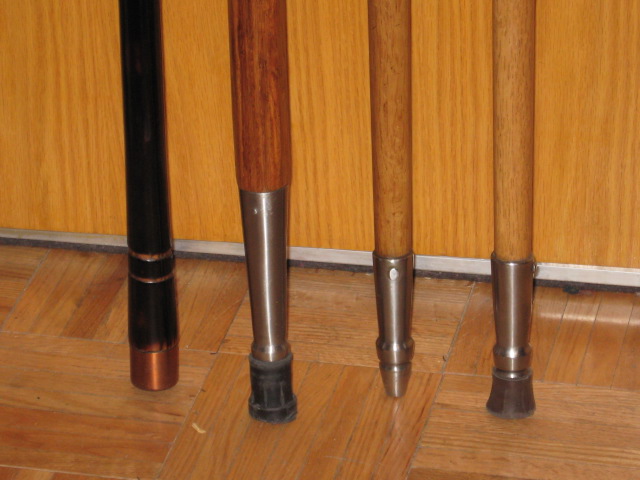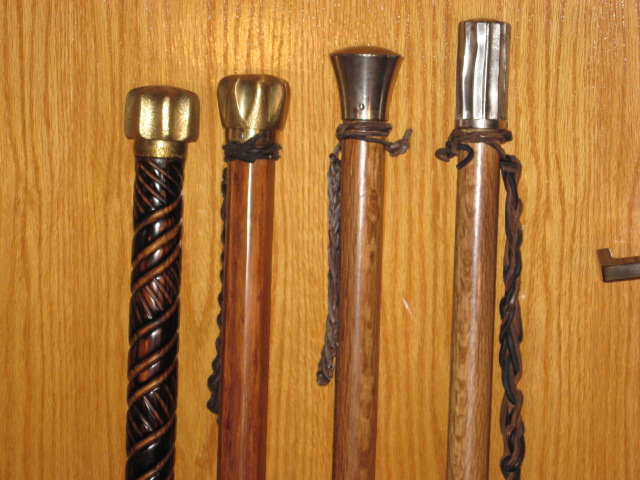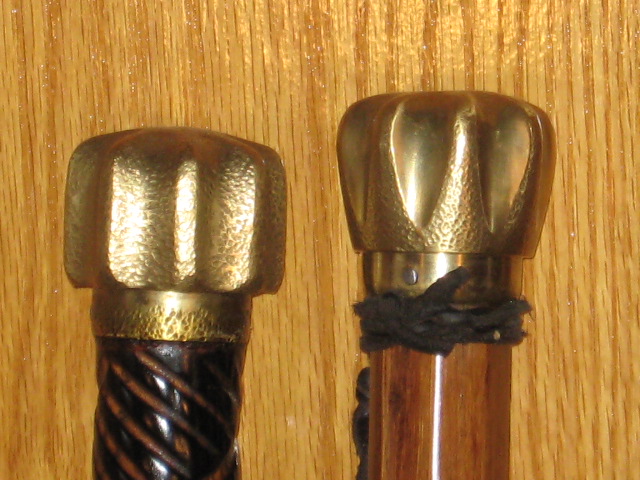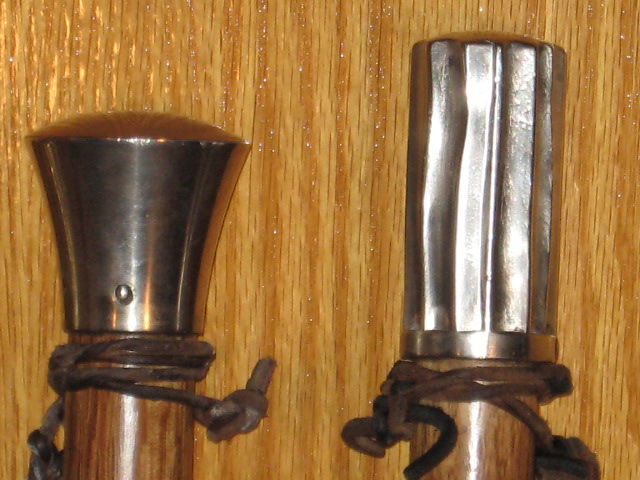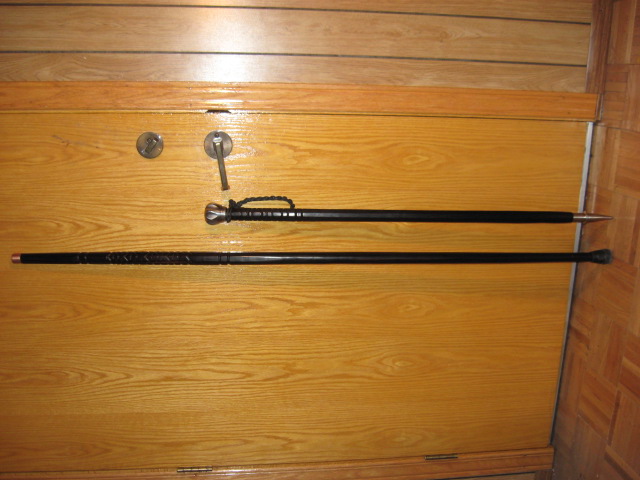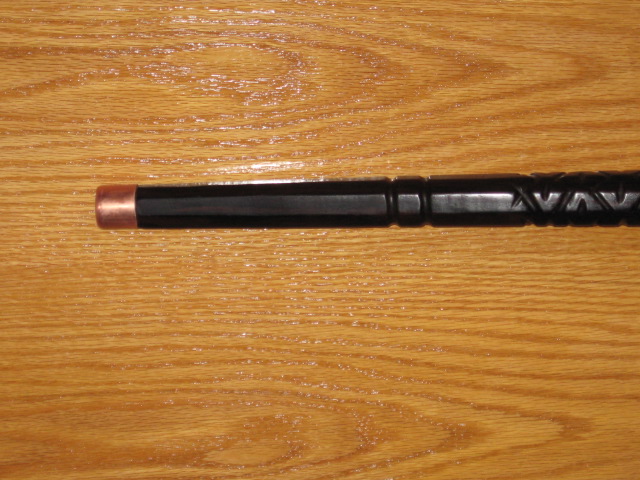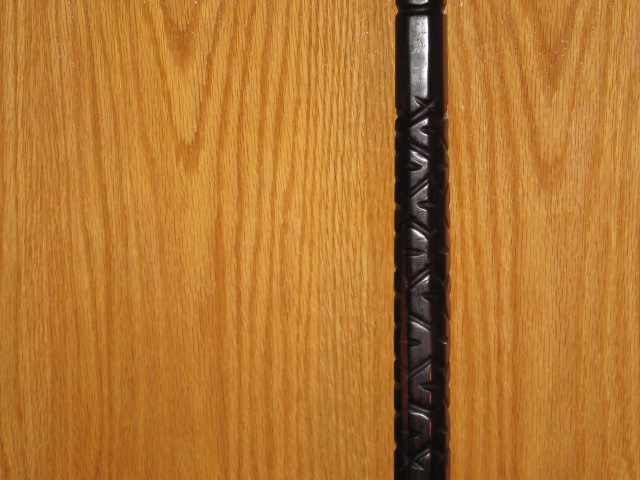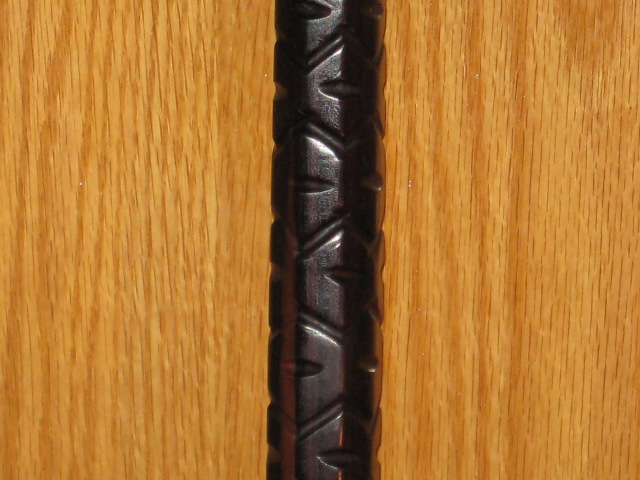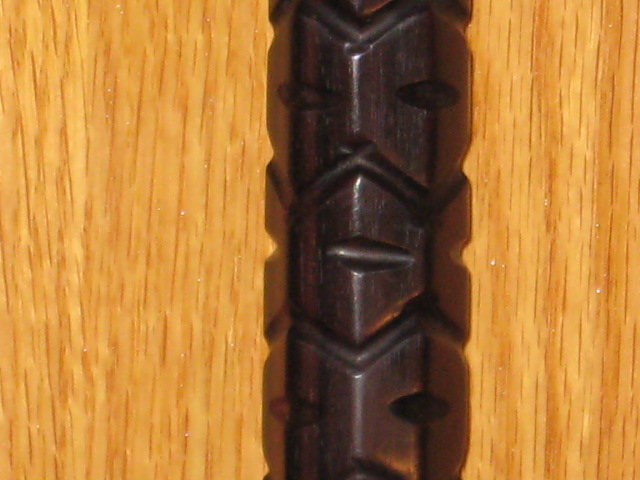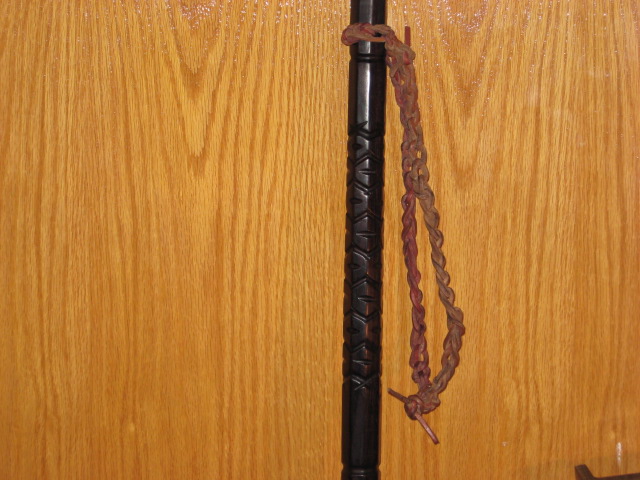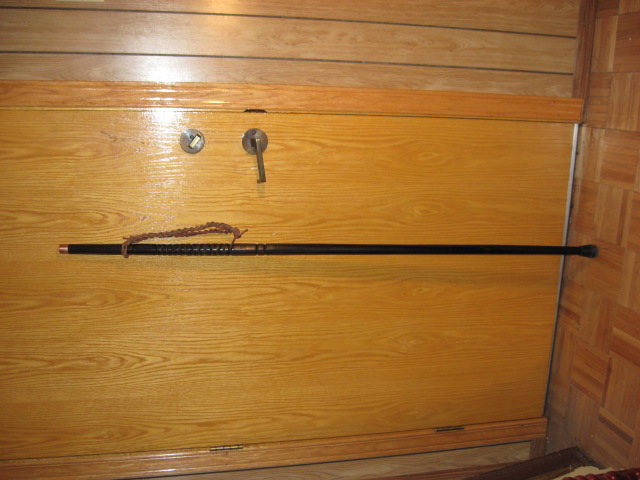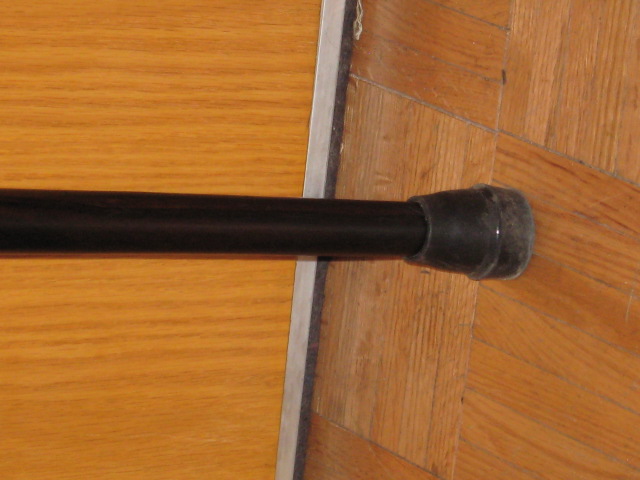A)The wood shaft is Macassar Ebony and was of square section. I used a draw knife, a small hand plane and a spokeshave to make the cross section octagonal. Used coarse to extra fine sanding sponges and up to 1200 grit sand paper.
Oil hand rubbed finish. The grooved pattern on the top 7" of the shaft was done using a small diameter round file.
B) The head is a Windlass steel mace head purchased from Kult of Athena that I used a belt sander to reprofile:
http://www.kultofathena.com/product.asp?item=...+Mace+Head
C) For the butt end I used a spear buttcap made for this Hanwey lance:
http://www.kultofathena.com/product.asp?item=...Lance+Head
This really works really well on icy and slippery side walks, and the steel of this buttcap is hardened steel as it was a challenge drilling a hole in it for a retaining pin. It is also stainless steel which is very good since in Winter the tip gets wet from snow, ice or puddles and is exposed to corrosive salt.
NOTE: The steel mace head is much softer mild steel and I have to check for rust after taking it out in cold weather since condensation on the cold steel when taking it indoors can quickly produce rust if not rubbed dry and oiled.
A coat of Renaissance wax does help prevent rust but still one has to check for rust before putting it away.
The brass version of the Windlass mace head would avoid the rust issue but it only take a minute or so to polish off light rust with a sanding sponge.
The stick weighs 2 lbs 8 oz.
38 1/2" long.
Shaft diameter 1 1/8".
POB 13" from the top of the head. For some odd reason :surprised: the stick when held with the head acting as a pommel feels very much in handling to many of my good one handed swords with presence on the scale/similar to my Albion Tritonia. :D :lol:
Note: I'm waiting on an ordered AC adapter for my digital camera as my camera seems to be a battery hog and I feel rushed to take pics before the battery give out with the camera's low battery signal flashing. When I get this AC adapter I will be taking more pics of various things in my collection or other DIY projects and reviews of my new toys.
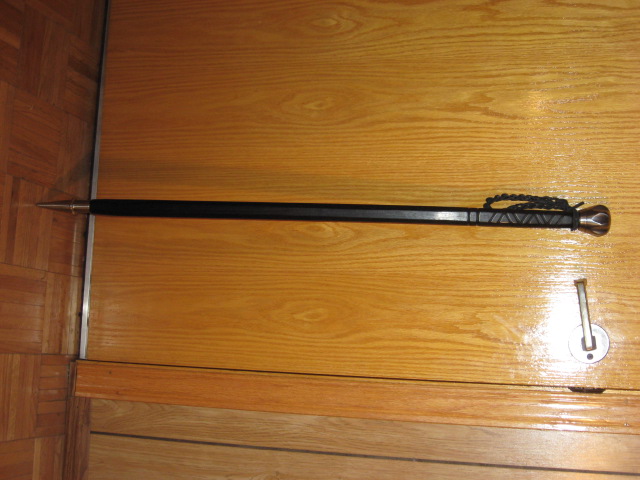
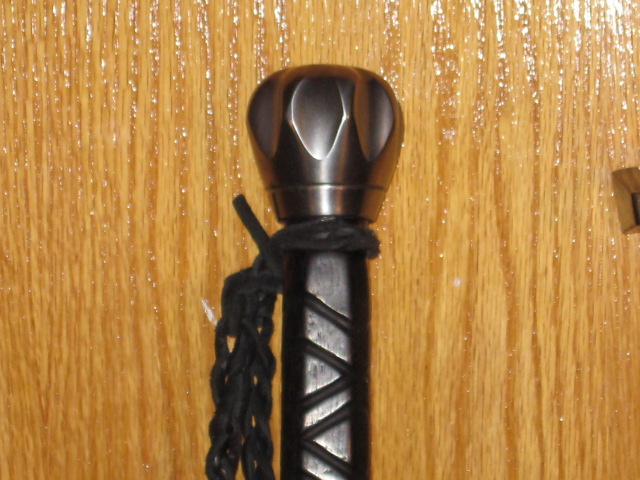
Modified steel head.
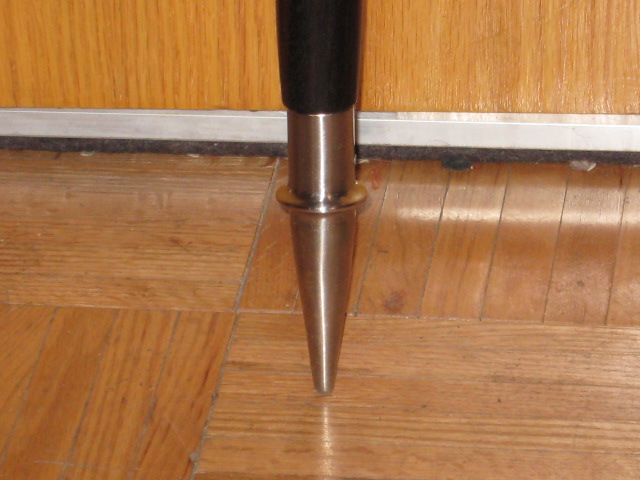
Butt cap & tip tapering from octagonal to round.
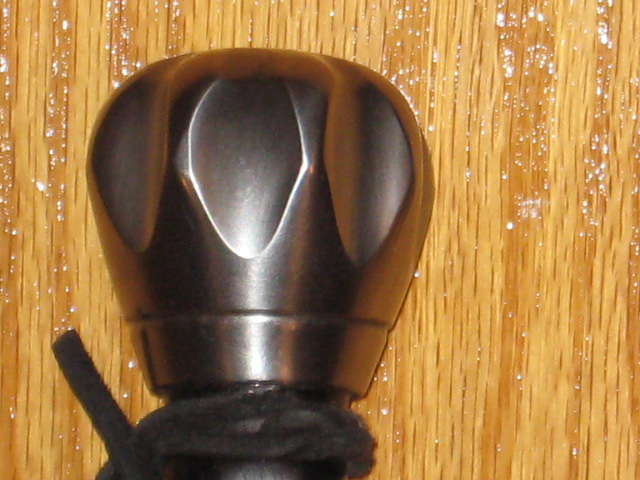
Closer view of head profile.
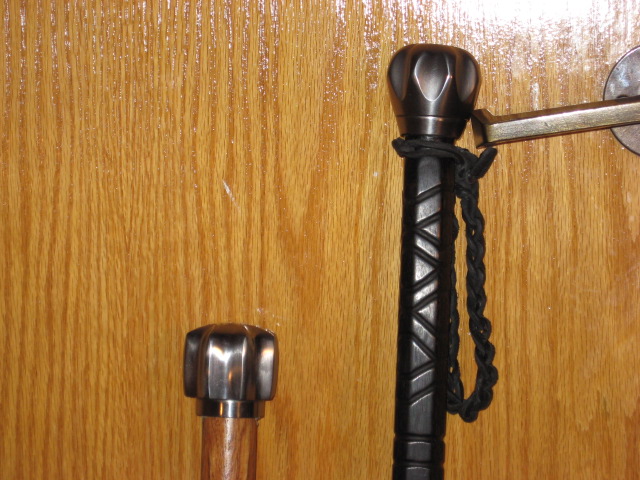
Unmodified head next to modified profile head to show how much material was removed.
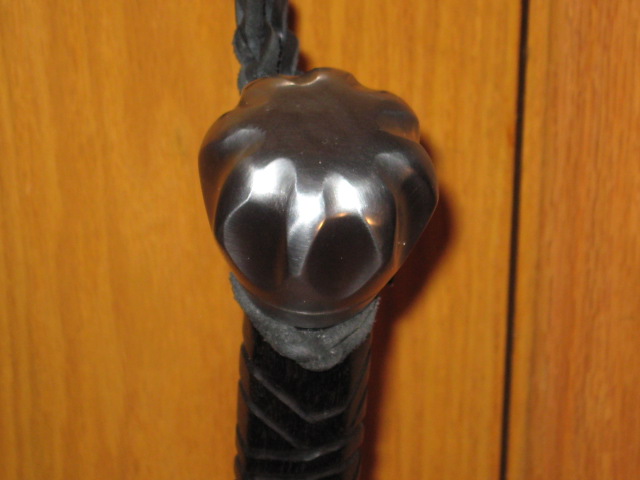
Angled pic of head.
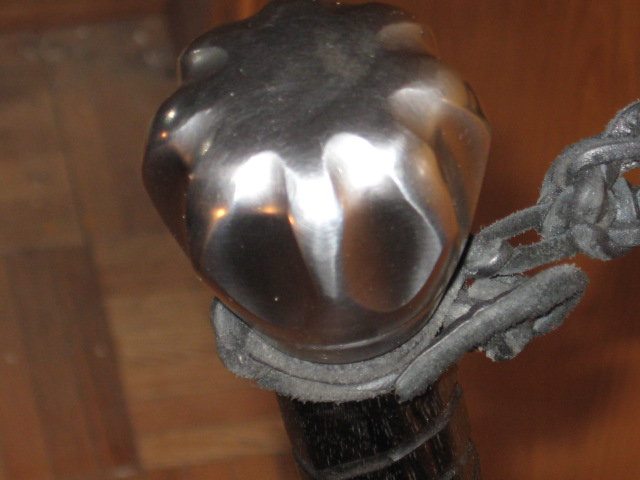
A closer angled pic of head.
